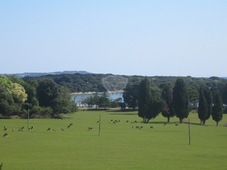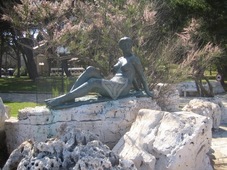to enlarge


or choose the place
from the menu below
 Rome |
 Byzantium |
 Venice |
 Vienna |
 Brioni |
 Smrikve |
 |
 |
_small.jpg) There are 3 olive trees that have over 2000 years in the World and this one from the
Brioni islands is not the oldest one but is among the very old one. It is for sure the oldest olive tree in Istria
and as olive tree is a symbol of peace. For its years could be also a symbol of visdom.
There are 3 olive trees that have over 2000 years in the World and this one from the
Brioni islands is not the oldest one but is among the very old one. It is for sure the oldest olive tree in Istria
and as olive tree is a symbol of peace. For its years could be also a symbol of visdom.
Tito died in 1980 and on his funeral there were: Head of States, Kings, Princesses, Head of the Governments, Foreign Ministers representing 127 World’s countries.
At the time in the United Nations there were 154 countries represented. In terms of World’s population, about 90% of the World was represented on his funeral and 82% in terms of the number of existing States at the time in the World.
There is a say that people are invited for a wedding but on a funeral they come on their own. The funeral can usually tell you about the respect person that passed away enjoyed during his life.
According to the Istrian historiographer Eduard Calic during the second World War over 60 million people were killed, 40 million people were injured and 50 million of refugees were created. At the time Tito’s army defeated the Nazi Fascist armies and regimes that were formed in the Balkan area.
 Yugoslavia was created in a very
complicated geographical area. Europe is created in a very complicated geographical area too. People living in the area of
former Yugoslavia were separated for centuries by different religions, cultures, and in the recent centuries by different
nations.
Yugoslavia was created in a very
complicated geographical area. Europe is created in a very complicated geographical area too. People living in the area of
former Yugoslavia were separated for centuries by different religions, cultures, and in the recent centuries by different
nations.
Tito’s effort to avoid future wars between people of the former Yugoslavia failed. The lack of knowledge, communication, culture, civilisation, moral leadership make that errors are repeated.
One decade after Tito’s death the country he developed started the dissolution process that ended in different painful wars with over 100.000 killed people and several millions of refugees.
 The dissolution of Yugoslavia
was an example of the failure of intergenerational responsibility and was also an example of the civilisation failure.
The dissolution of Yugoslavia
was an example of the failure of intergenerational responsibility and was also an example of the civilisation failure.
The civilisation is like a circle, new generations need to learn from the olders, need to preserve the good elements of their traditions and solve the challenges each generation face on their own. What happened to Yugoslavia can happen to any instituition built or developed by men: family, company, country, sovra-national organisation, etc.